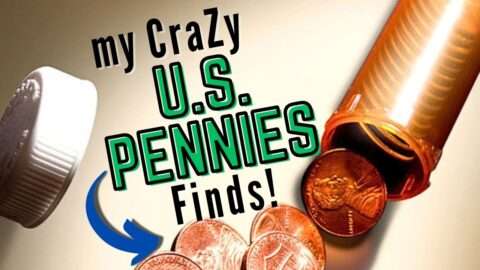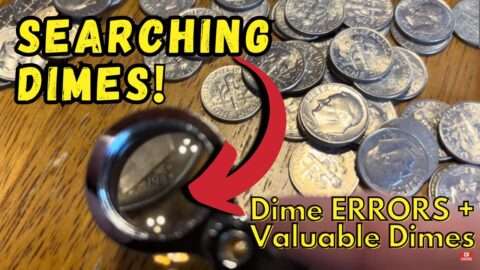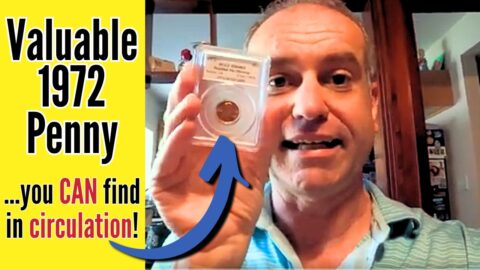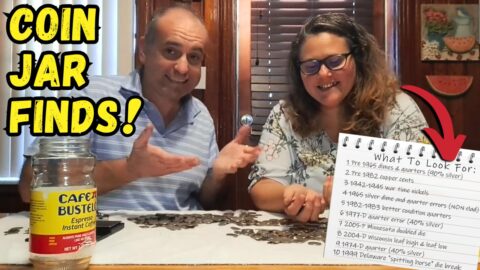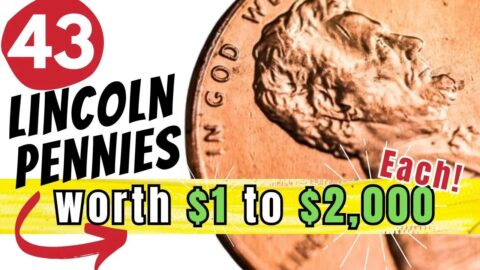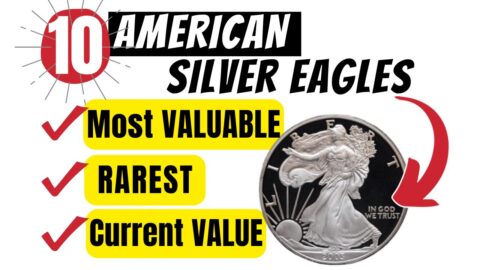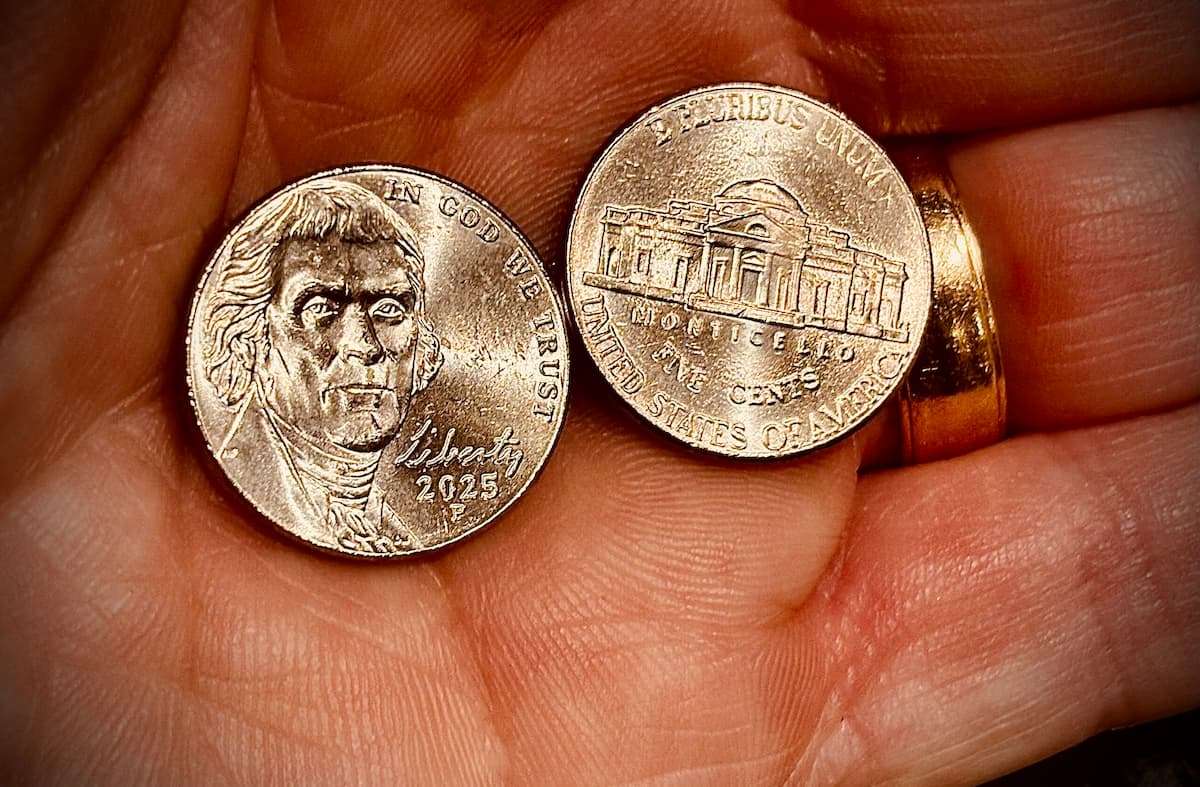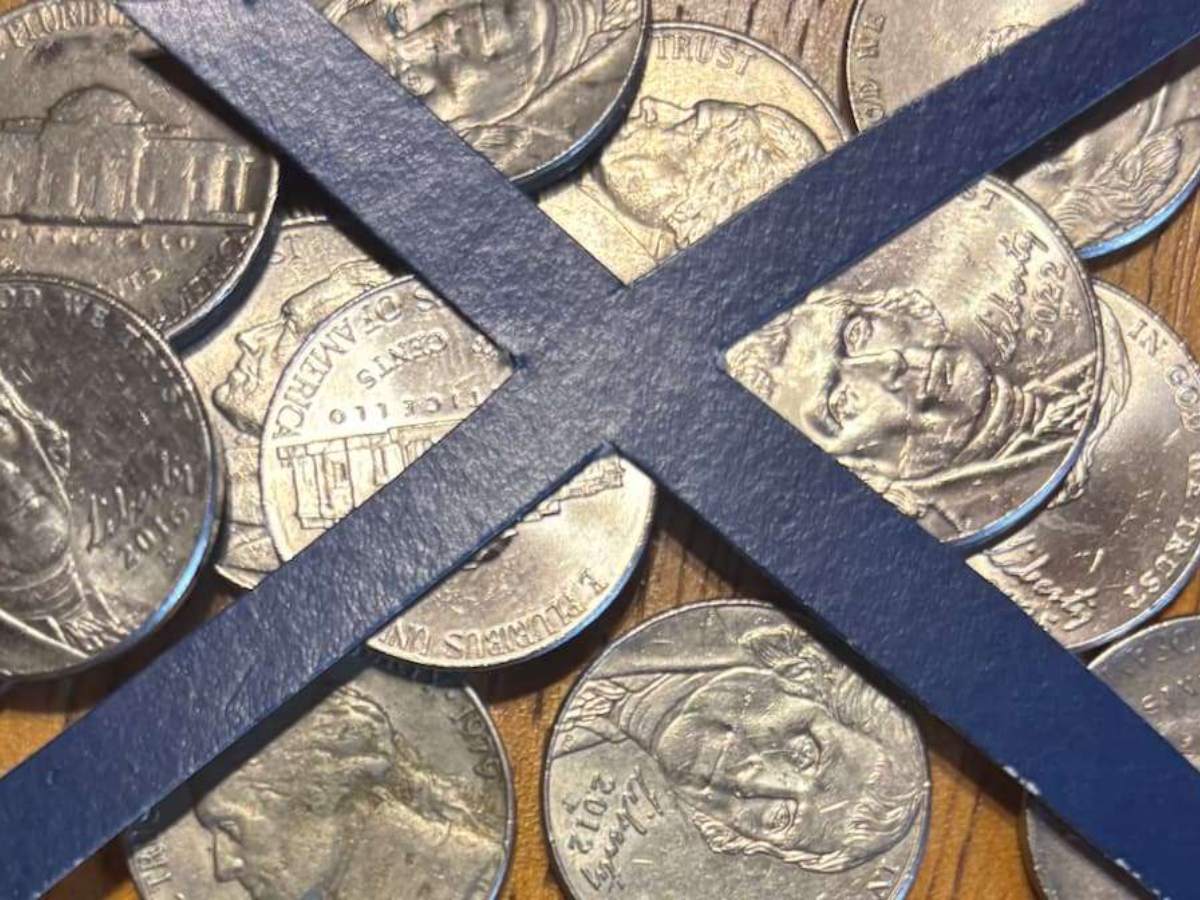While they’re all known as “golden dollars,” not all Sacagawea dollar coins are made from gold.
How can you tell which ones ARE made of gold and which ones are simply gold-en dollars?
This video will help you determine if you’ve struck it rich with the real gold Sacagawea dollars that are rare and valuable!
⚡TIMESTAMPS FROM THE VIDEO⚡
00:00 Intro
00:24 We have a 2000-P Sacagawea dollar coin
00:56 Sacagawea dollars debuted in 2000 with much excitement
01:12 Sacagawea dollars were intended to replace dollar bills
01:59 Gold dollar coins from the 1800s
02:17 Would Sacagawea dollars do better than Susan B. Anthony dollars did?
02:50 U.S. Mint decided to make a gold dollar coin
03:14 Promotional campaigns for the first Sacagawea dollars
03:34 General Mills put Sacagawea dollars in boxes of Cheerios
03:48 I found some 2000 dated pennies inside Cheerios boxes
04:30 Sacagawea dollar coins did not do well in circulation
05:02 Sacagawea dollars are popular collectibles
05:12 Sacagawea gets a new reverse every year (Native American Dollar Series)
05:22 What Sacagawea “golden dollars” are made of
06:12 How to identify a 2000 22-karat gold Sacagawea dollar
07:11 How to identify a 2025 24-karat gold Sacagawea dollar
08:23 Summary
============================
TRANSCRIPT:
Hey everybody! This is Josh with The Fun Times Guide. And today we’re going to talk about Sacagawea dollars.
Namely, what are they made from?
A lot of folks think they’re made from gold — because they’re called golden dollars.
But for the most part, and I will say for the MOST part, that is not true.
So, what are most Sacagawea dollars actually made from?
I’m going to tell you right now…
So what we have here is a 2000-P (or Philadelphia Mint) Sacagawea dollar.
On the obverse is a portrait of a Shoshone woman (Sacagawea) and her infant (John Baptiste). This design was created by Glenna Goodacre.
On the reverse we see… or the tail’s side… a soaring eagle. This design by Thomas D. Rogers was on the Sacagawea dollar from 2000 to 2008 originally.
And when this coin first came out… Good golly, it created a stir! This was a big deal.
People who remember kind of the run-up to the golden dollar campaign in 2000, will remember all of the excitement that surrounded this coin.
There was a lot of hope that it would kind of become the coin of the future… Replace the dollar bill… Help save taxpayers millions of dollars. Because dollar coins last a whole lot longer in circulation than dollar bills do. (Usually around 30 years for a coin versus maybe 18 to 24 months for a typical dollar bill.)
While they cost more to produce a coin, you’re talking a few cents more than a dollar bill. So, you know… on average a dollar coin would save taxpayers a lot of money versus printing dollar bills.
So there was excitement about that. There was a lot of anticipation about this coin coming out — because it was distinctive for its time.
I mean we had never… The U.S. Mint had never before struck a coin like this.
While there were gold dollar coins made in the 19th century that were a fraction of the size and weight of this coin, it was the first time in MANY generations that the U.S. Mint had struck a dollar denominated golden colored circulating coin like this.
And there was a lot of hope that it would do better than the Susan B. Anthony dollar which preceded it.
When the Anthony dollar came out in 1979, it flopped essentially almost right away. People confused that coin with the quarter. Production continued into 1981. There was talk about actually colorizing Anthony dollars in a golden shade like this — so they looked different than other coins of its era. That didn’t happen.
By the late 90s, it was pretty much set in stone that the U.S. Mint would once again try making a dollar coin.
And to sort of avoid repeating mistakes of the past, this new dollar coin would be golden in color… have a smooth edge versus a reeded edge like the Anthony dollar did… and have a very distinctive, beautiful design — as this coin, I would say, does.
So in 2000 when the first Sacagawea dollars were actually struck for circulation, the promotional campaign was just incredible!
There were big box department stores that were touting that they would both give out in change and also accept in cash transactions Sacagawea dollars. General Mills, the popular cereal brand, was actually giving away over 5,000 Sacagawea dollars that were being hidden in boxes of Cheerios.
My sister and I looked for those coins. Never found… never found one. We DID find the co-distributed 2000 dated pennies that came in some 10 million boxes of Cheerios, but never came across a Sacagawea dollar in our Cheerios boxes.
There were other campaigns too. In fact, this coin here dated 2000-P we actually received as part of a campaign that a local car dealer was running. They actually gave you 10 Sacagawea dollars if you test drove one of their cars! We DID test drive a car, and didn’t buy it. We did receive though the promised Sacagawea dollars. So, they were certainly, you know, staying to the word there on that standpoint.
But the long and short of it was this coin did not do very well in circulation because the dollar bill was still being printed and distributed and most people it seemed at the time (and to this day even, as polls will reveal) seem to prefer a folding dollar versus a dollar coin.
So within a couple of years of the Sacagawea dollar being released, it was basically determined that it was, as far as circulation goes, a failure.
But the golden dollar continued on and to this day it does actually (not for circulation purposes, although it’s still legal tender) but it’s still a collectible coin that the Mint produces.
The Sacagawea obverse is now paired with a new reverse every year as part of the Native American dollar series.
But one part of this coin lives on in pop culture lore and that is the “golden dollar” nickname. And thus a lot of people… not everybody, but a lot of folks (especially those NOT in the coin collecting community) think that these coins are made from gold because of their appearance AND their nickname “golden dollar”.
But for the most part, that’s not true. These are NOT made from gold. At least most of them aren’t.
I’ll give you the little caveat in a minute as to why I say “most” and not “all”.
This is a typical 2000 Sacagawea dollar. It’s made from a 77% copper, 12% zinc, 7% manganese, and 4% nickel outer layer bonded to a pure copper core.
So, effectively, it’s a clad coin like our modern-day dimes and quarters and half dollars.
There were some gold Sacagawea dollar coins actually made. The first came out in… actually were STRUCK in 1999, but bear a 2000 date with a “W” mint mark from the West Point Mint.
Some of those were sent up into orbit on a space shuttle Colombia mission. Those coins are 22 karat. They did come back to Earth, and they were displayed in museums. Some were exhibited on the coin show circuit for a long time.
You would know if you had a 22-karat 2000-W Sacagawea dollar!
First of all, a typical Sacagawea dollar actually weighs about 8 grams — 8.1 grams is their official weight, though there’s a tolerance up and down a little bit there.
We’ll see here… This one weighs probably 8 to 8.1 grams. Or it should anyway — based on specs. And it comes in at 8.1 grams as it should, as expected.
Now, the U.S. Mint in 2025 actually had a 25th anniversary .9999 (or four 9’s “fine”) 24-karat Sacagawea dollar dated 2025 with a “W” mintmark AND it also brings back the original reverse design!
7,500 were struck. They were almost an immediate sellout. And one of the things about those coins that you would know right away distinguishes them from a typical clad Sacagawea dollar (besides the fact that it contains eagle reverse versus the Native American dollar reverse) is that they weigh over 15 grams.
So, not only would it look different and contain a “W” mint mark, but it would weigh nearly twice the amount of a typical clad Sacagawea dollar.
So, I hope that helps you better understand what your Sacagawea dollars are actually made from.
While there actually are some gold Sacagawea dollars actually out there. And you MAY have one. For the most part, if you find one of these in pocket change, it’s almost guaranteed it’s a clad — NOT gold — dollar.
And there you have it. I always hate being the bearer of “clad news” (ha ha). But if you have a Sacagawea dollar, it’s almost a guarantee it’s made from a manganese / brass profile and NOT made from gold.
But, the more you know, right? At least you know! Knowledge is power.
So, if you liked this video, please “like” and share it. I’d love to know YOUR thoughts about this video.
And if you think you have a gold Sacagawea dollar, I’m always happy to answer questions — if I can get to them.
So again, this is Josh with The Fun Times Guide saying thank you for watching. And happy collecting!

